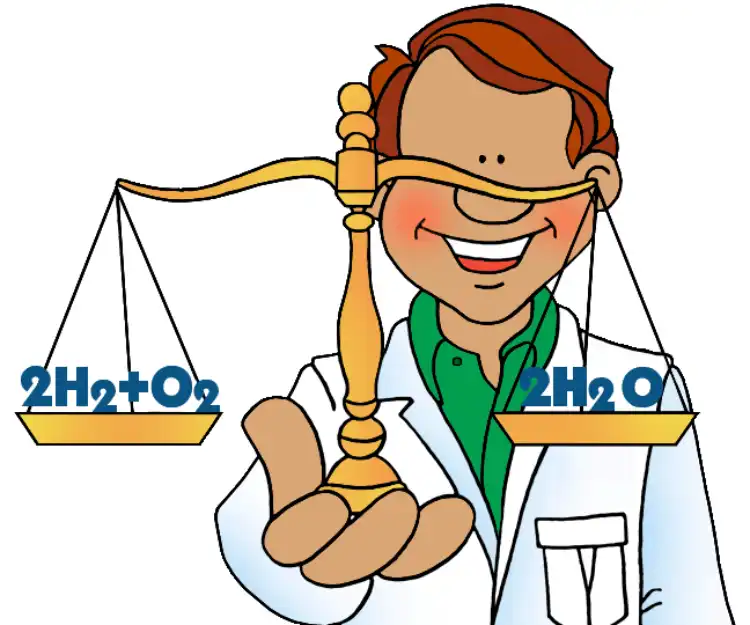Chemical equations are used to represent the reactants, products and the direction of a chemical reaction. However, it’s important to ensure that these equations are balanced, meaning that the number of atoms of each element on the reactant side is equal to the number of atoms on the product side. This is done to comply with the law of conservation of mass, which states that the total mass of the reactants must be equal to the total mass of the products.
The process of balancing chemical equations is called stoichiometry, and it is a fundamental step in understanding the reaction and determining the amount of reactants and products required to complete the reaction. Without a balanced equation, it is impossible to accurately predict the outcome of the reaction or to determine the heat generated or absorbed. In other words, balancing chemical equations is essential for understanding and predicting the behavior of chemical reactions.
- Hydrogen gas combines with nitrogen to form ammonia
The statement “Hydrogen gas combines with nitrogen to form ammonia” can be written as a chemical equation as:
H2 + N2 -> NH3
However, this equation is not balanced because there are 2 hydrogen atoms on the reactant side, but only 1 on the product side, and 2 nitrogen atoms on the reactant side, but only 1 on the product side. To balance the equation, we can add a coefficient of 3 in front of the N2:
3H2 + N2 -> 2NH3
Now, the equation is balanced and the law of conservation of mass is obeyed. The balanced equation represents that for every 3 molecules of Hydrogen gas, 1 molecule of Nitrogen gas and 2 molecules of Ammonia will be produced.
- Hydrogen sulphide gas burns in air to give water and sulpur dioxide
The statement “Hydrogen sulphide gas burns in air to give water and sulfur dioxide” can be translated into a chemical equation as follows:
H2S (g) + O2 (g) –> H2O (l) + SO2 (g)
However, this equation is not balanced yet. To balance the equation, we need to ensure that the number of atoms for each element on the reactant side is equal to the number of atoms for that element on the product side.
So, we will add a coefficient of 4 to the sulfur dioxide (SO2) and also 2 to the water (H2O)
4H2S (g) + O2 (g) –> 2H2O (l) + 8SO2 (g)
Now the equation is balanced, it obeys the law of conservation of mass and the number of atoms for each element in the reactants is equal to the number of atoms for that element in the products.
- Barium chloride reacts with aluminium sulphate to give aluminium chloride and a precipitate of barium sulphate
The chemical equation for the reaction between barium chloride (BaCl2) and aluminium sulphate (Al2(SO4)3) to give aluminium chloride (AlCl3) and a precipitate of barium sulphate (BaSO4) can be written as:
BaCl2 + Al2(SO4)3 -> AlCl3 + BaSO4
However, this equation is not balanced, as there are different numbers of atoms on the reactant and product side. To balance the equation, we can add coefficients in front of the chemical formulas:
BaCl2 + Al2(SO4)3 -> 2AlCl3 + BaSO4
Now the equation is balanced, on the left side we have 1 Barium atom, 2 Chlorine atoms and 2 Aluminum atoms and 6 Sulfur atoms , and on the right side we have 2 Aluminum atoms, 2 Chlorine atoms, 1 Barium atom and 1 sulfur atom.
The balanced chemical equation for the reaction between barium chloride and aluminium sulphate to give aluminium chloride and a precipitate of barium sulphate is: BaCl2 + Al2(SO4)3 -> 2AlCl3 + BaSO4
This equation is now balanced, with the same number of atoms of each element on both sides of the equation, and it is consistent with the law of conservation of mass.
- Potassium metal reacts with water to give potassium hydroxide and hydrogen gas
The statement “Potassium metal reacts with water to give potassium hydroxide and hydrogen gas” can be translated into a chemical equation as: K + H2O -> KOH + H2
However, this equation is not balanced, because there is only one potassium atom on the reactant side, but two on the product side, and two hydrogen atoms on the reactant side, but four on the product side. To balance the equation we can add coefficient 2 in front of H2O and 2 in front of H2:
K + 2H2O -> KOH + 2H2
This equation is now balanced and the law of conservation of mass is obeyed.
It is important to remember that the balanced chemical equation must have the same number of atoms of each element on both sides of the equation.
Another way to write the balanced chemical equation for the reaction is:
K + 2H2O -> KOH + H2
As you can see the number of atoms of each element is the same on both side of the equation, and the law of conservation of mass is obeyed.


